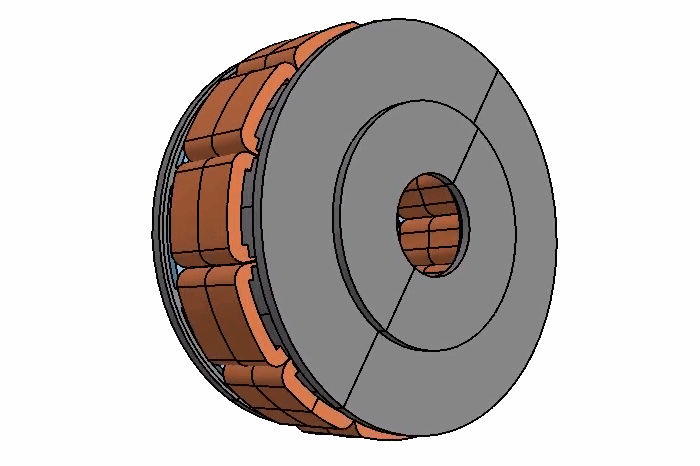Higher Order Magnetic Vector Potential: Axial Flux Motor
Axial flux motors have, over recent years, become increasingly more popular for aerospace and automotive applications. One of the main advantages of axial flux motors is their high power density, which allows for high efficiency in compact designs.
In this simulation, you model a quarter of
an axial flux motor. The full machine consists of a central stator with two rotors on
either side. Five magnets are attached to the rotor and seven coils are attached by
stator teeth to the stator. The magnets and coils are separated by an air gap. The
interaction between the magnets (positioned on the rotor) and the coils (positioned on
the stator) produces torque, and therefore, mechanical rotation.
 |
 |
For the magnetic vector potential calculation, this tutorial uses the Finite Element Magnetic Vector Potential model in all physics continua. To increase accuracy in sensitive areas, such as the air gap, the magnets, and the stator teeth, you use 2nd order finite elements.